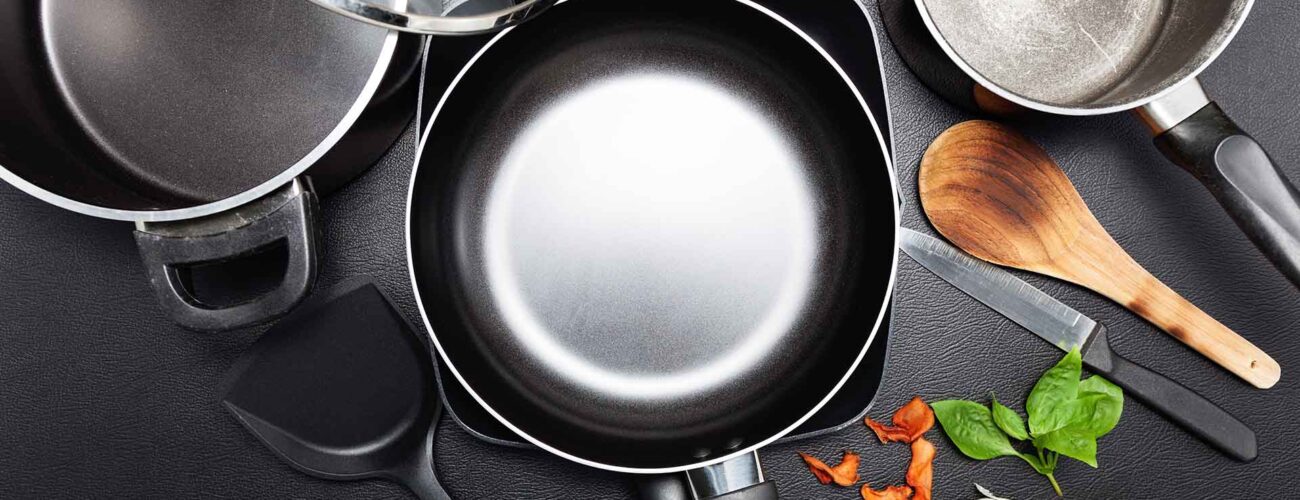

Moving Soon? Here’s How to Pack Pots and Pans Safely
Posted in How-to,Moving Tips & Tricks on March 18, 2021
Loading boxes before you move requires some patience, research, and mastery. If you want to be sure that every belonging is right where you need it and that it’s safe from damage or misplacement, follow the proven expert tips. In the process, your kitchenware demands extra attention. Wondering how to pack pots and pans safely? These seven simple rules will help you transfer your scullery and eat-in props harmlessly into your new home.
Why Is Proper Packing Essential?
One of the most significant relocation hacks is to plan it all in advance. Following the advice that helps you organize your move is crucial. Why? Well, not only that you must strive to preserve all your possessions while transporting them, you’ll have to load and unload the trucks and unpack when you arrive at your destination. Keeping the entire process neat and tidy helps you:
- Increase safety and do damage control,
- Keep track of your stuff with ease,
- Declutter and choose wisely what to take with you,
- Reduce relocation costs,
- Save time and minimize stress.
If you struggle with categorizing and putting your belongings in order before the move, look for a company that offers an affordable yet reliable packing service.
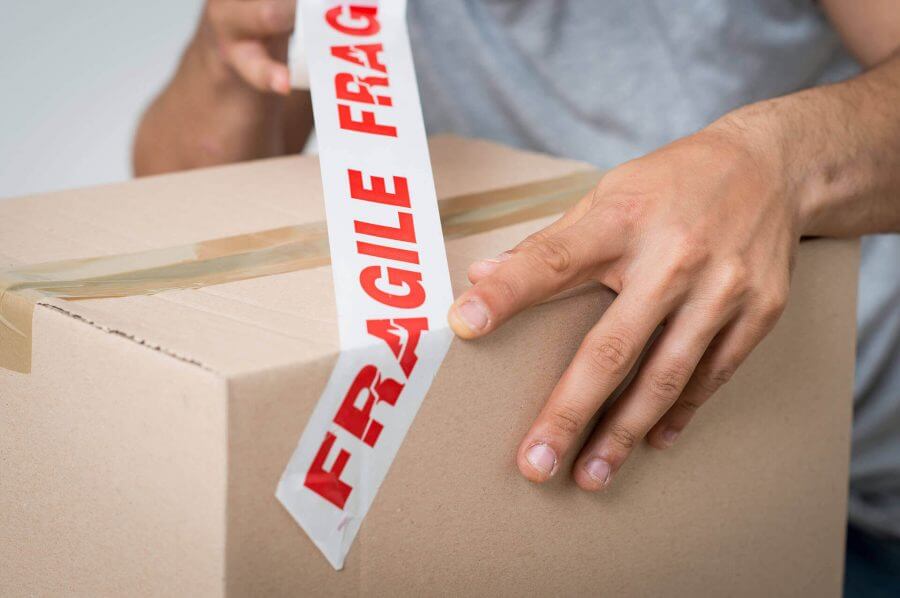
How Do You Pack Kitchen Items?
The Joint Center for Housing Studies has shared several useful statistics. According to their sources, approximately 31 million people in America move each year. In their experience, the kitchen is the most difficult room when it comes to residence changing. From food to cutlery and glass items, it’s no wonder that people spend most of their time strategizing and preparing for it. Here’s what you must pay attention to:
- Plan carefully,
- Prepare boxes and other supplies,
- Select the necessary items and separate them from the ones you plan on leaving behind,
- Categorize your belongings according to the frequency of their usage,
- Put your dishes, pots, and pans into the “essentials” box,
- Start by exploring (and decluttering) the messiest drawers and cabinets,
- Take unopened bottles and spice with you but leave behind any food leftovers and everything that’s about to expire.
Packing pots and pans for moving cross country is a bit more specific topic. Let’s see which materials and supplies you’ll need and what’s the best way to use them.
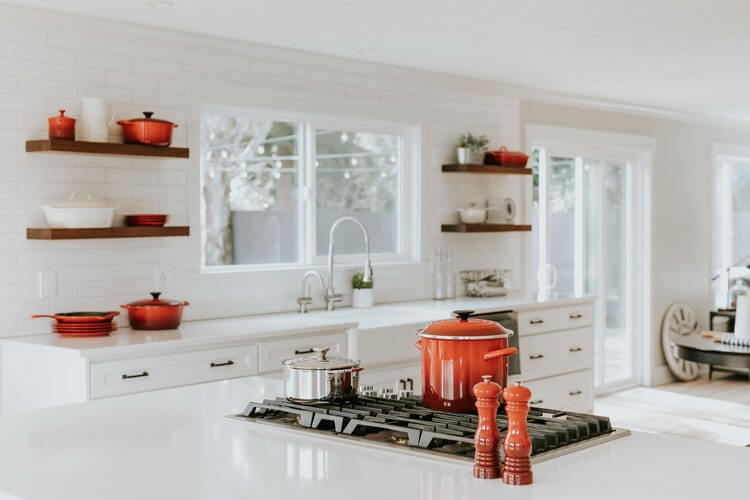
How Do You Pack Pots and Pans to Move – Step-by-Step Guide
With many oddly shaped and fragile properties lying around your cooking area, looking for a detailed guide on how to pack pots and pans for moving is highly recommended. Regardless of how organized you are, additional tips and tricks will come in handy. If looking for a more spacious dwelling is your prime reason to move, that still doesn’t imply taking every item with you. So, let’s see the steps that will help you determine what to bring along and how to do it right:
- Get organized,
- Gather the necessary materials,
- Make a list of essentials,
- Decide where to start,
- Clean everything,
- Choose what goes with you,
- Make groups of “threes”,
- Label every box properly.
Follow these steps to avoid clutter, damage, or losses. Save up some extra space and cut long-distance movers costs. Here is a bonus tip: learn about making a household inventory list – it will help you out from start to finish.
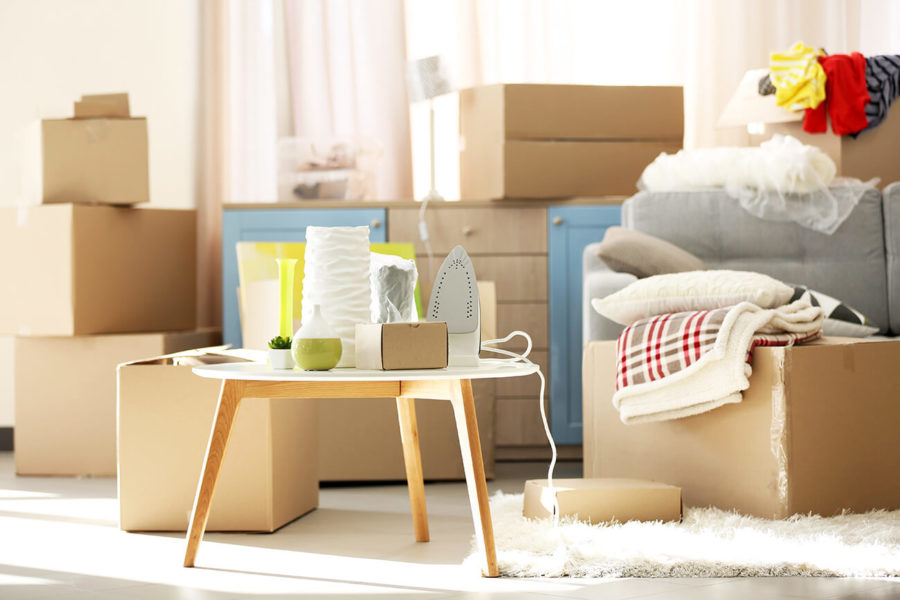
Getting Organized Before Moving Across Country
The main step you must take is to go through all of your kitchen items. Since we all have at least one drawer that needs emptying, it’s crucial that you find the elements you no longer need or want.
Take time to separate the obsolete things or those that don’t serve you anymore. Some of the main difficulties you must combat at this stage involve inner voices and excessive memorabilia.
Maybe you have a set you bought ages ago and its purpose is to prepare delicious and exotic meals. However, you’ve never used it, even though you’d hate admitting that. Still, you ought to feel at least one bit tempted to wrap it and take it to your new home. That’s what your inner cook would advise you.
Nevertheless, the other voice from within is far more practical. It will suggest considering how heavy your possessions are and how much you will pay for the extra cargo. Don’t harm your relocation budget just because you might make a Vietnamese Cobra Heart at some point.
The wise call is to select the unused kettles, bowls, and saucepans in great condition and donate or sell them. Of course, all those elements that are missing lids or handles must be discarded.

Gathering the Materials You’ll Use
Collecting the right materials is tremendously important. Whether you’re packaging and preserving large objects such as a piano or preparing Christmas ornaments for storage and transportation, you must pick the suitable equipment. The same goes for your cooking containers and utilities. The principal packaging assets you must have are:
- Boxes,
- Paper,
- Wrap,
- Tape.
Finally, you’ll want to have some labels, post-its, or an alternative to them. If you should require some extra help with obtaining the fitting materials, get in touch with cross-country movers who offer boxes and packing supplies as a service.
Different Packing Boxes
Firstly, you should acquire several heavy-duty boxes in various sizes. The exact number depends on how many cooking items you have. Or, to be more precise, how many of them you’re planning to relocate with you. Pro tip: Always strive to get just one bit more packaging materials than it seems you’ll need.
It’s better to have an extra case than to run out of necessary supplies just before the long-distance movers arrive. In a worst-case scenario, some of the extra cases can be used to pack shoes or pieces of clothing.
If you’re not that keen on spending an extra buck on more packaging materials, ask your friends if they have some. Also, they most likely keep some unused packaging supplies in one of your local stores.
If you’re not relocating alone, keep an eye on the figures that show how much material a family-sized kitchen requires. On average, families need circa five small packages, ten medium-sized ones, five large, and three extra-large.
Packing Paper
This is another crucial packaging supply. It prevents objects of all sizes from dislocating or getting damaged in storage and transport. If you’re wondering about the ideal amount of this material, three rolls should be enough for an average family to wrap their cooking gizmo properly.
Plastic and Bubble Wrap
Plastic wrap is a great choice for multiple stuff you might take on your cross-country move. That includes food leftovers (not recommended to take them to your new home, but you might like to save them for the trip). Moreover, plastic and bubble wrap keep all stacked items together and prevent them from shifting all over.
Label Markers
Once you’re all packed, you’ll have to rely on the labels to figure out where your belongings are. The marks you make will tell which cases belong to which room, how essential they are, and whether they’re fragile. These are also significant inputs for cross-country movers.
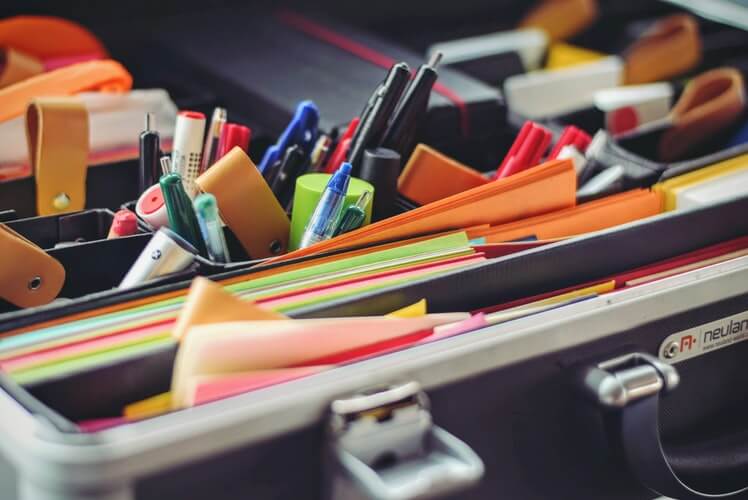
Making a List of Essentials
Imagine if you packed up your whole kitchen and realized you didn’t leave any plates for dinner that night. Set aside the most important kitchen elements that you’ll need right before and right after the move. Every family member should have a plate, cup, or mug, and a set of tableware.
Also, you should leave a few bowls unpacked too. Besides, you will most likely use a sponge and detergent at least once again. Keep them out of the boxes, and toss them once you’re done. All of these belongings should have a box of their own, labeled as ‘kitchen essentials.’
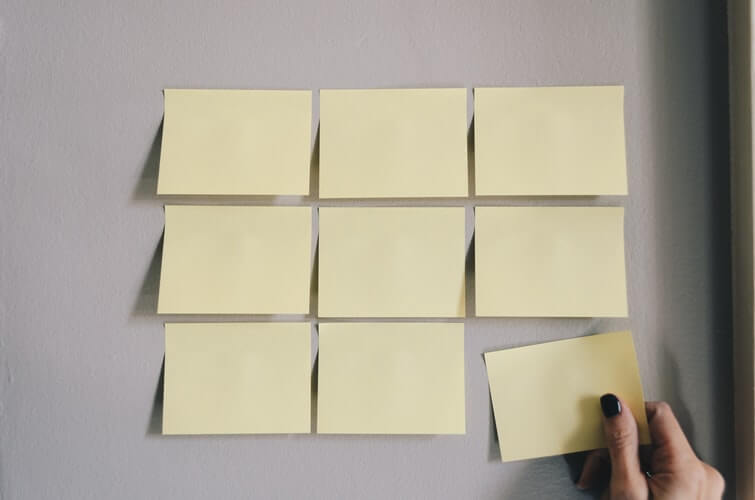
Choosing Where to Start Is the Best Way to Pack and Handle Pots and Pans
Any place within the room is a perfectly good place to start. As each cabinet and drawer can represent a unique challenge, make some room to explore them properly. Firstly, you should clear your countertop and spread the packing paper on it.
If you choose to start from pots and pans, make sure you have all of the necessary equipment – just enough boxes, paper, and wrap. Additionally, you’ll be in for some selection and decluttering.
How many pots and pans do you really need? According to researchers – three saucepans and two frying pans. Double-check their condition and usability before making a final choice.

Cleaning Everything
Careful and thorough cleaning is unavoidable if you want to relocate smoothly. If you’ve thought that a little grease can’t do much damage, you’re overly optimistic. Not only that it can smudge other possessions packed near them (which adds another cleaning task when you reach your new home), but it can also be dangerous.
Oil is a serious fire hazard. Since long-distance moving implies a long drive, the truck is likely to heat up. Once you mix a high temperature with an oily surface, you can expect trouble. If any of your kitchen equipment isn’t supposed to be washed, pack them separately.
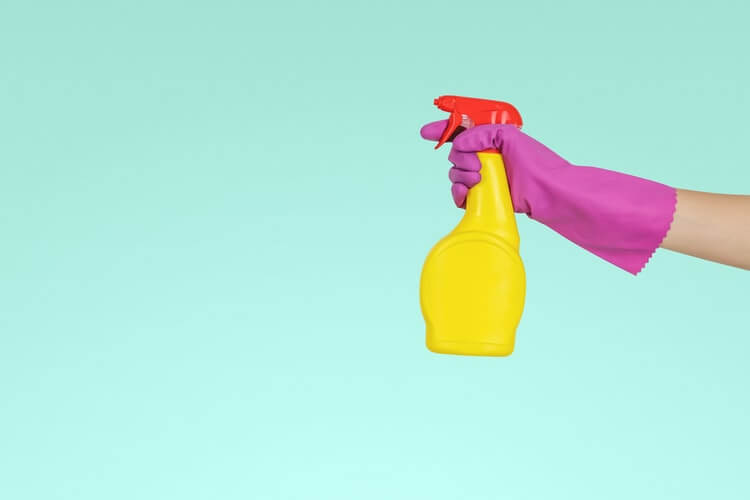
Making Groups of “Threes”
This method will help you save a significant amount of space. And not only that, but it also reduces the packaging material you are bound to use. First, take one large pan, then put a smaller one inside it, and add the smallest one at the end.
Classifying them according to their size is the smartest way to do it. Then, repeat the process with every other item and piece of cooking equipment.
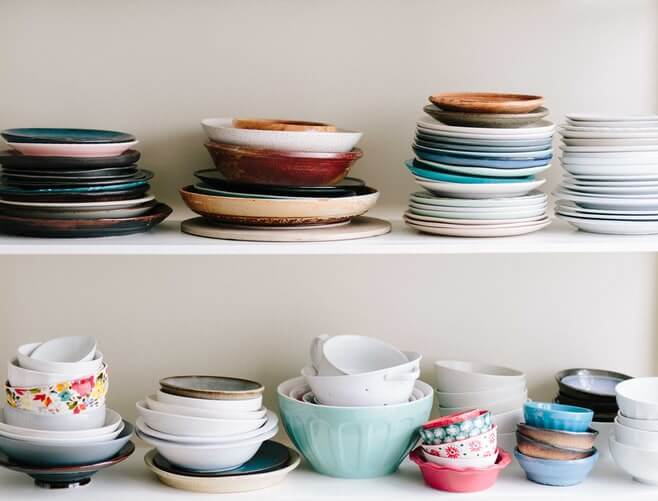
How Do You Pack Pots and Pans for Moving Efficiently? Labeling the Boxes
Mark each box so that you don’t get confused or lost afterward. Once you arrive at your new home, unpacking should go easy. As for kitchen utilities, there are several categories everyone possesses:
- Pots and pans,
- Glasses and stemware,
- Plates and bowls,
- Flatware and serving utensils,
- Knives,
- Appliances.
Additionally, your drawers certainly contain stuff like cookbooks, oven mitts, storage containers of various sizes, and more. These objects should be packed separately with a proper label.
Also, since every pot and pan falls under a different category than their glass lids, make sure you have packaged and marked them too.
What Is the Best Way to Pack Pots and Pans for Storage?
Use a large or average-sized box and stack your kettles and stewpots carefully. The smaller ones should be put into the larger ones with small pieces of packing paper as cushioning between them.
Don’t forget to add extra support for cooking containers and utensils by putting paper or even dish towels into the openings. If you’re about to transfer them to a new location, this will keep them from moving around during travel.
You should wrap glass lids in packing paper, too, and place them around in a separate case. Or, you could put them around the bulkier kitchenware. Lastly, you must secure the bottom of each box with tape. And, of course, label all.
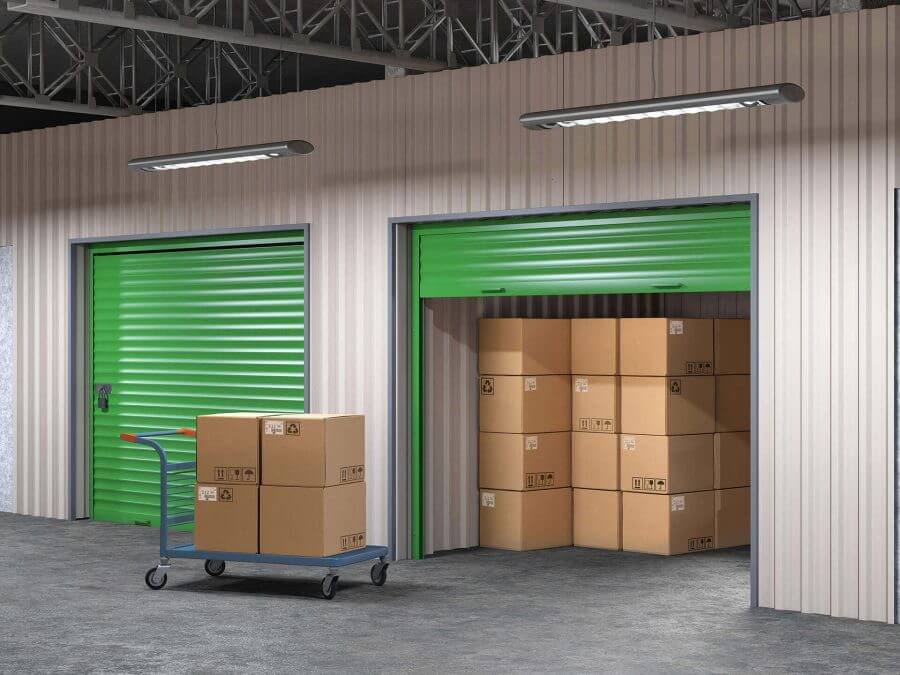
How to Pack Pots and Pans for Shipping on a Long-Distance Move
If you’ve read these pieces of advice carefully, you’re good to go. You’ll have no problem relocating your household properties and cooking vessels. Just ensure to take a moment to plan it all and find the best long-distance moving services and avoid scams.
Also, find all needed materials in advance and look for a suitable storage unit. Cross Country Movers can offer you this, and a lot more to boot. With our cross-country moving services, you can sit back and let the pros do everything. We have everything from packing and transport to car shipping services, storage, and even relocation insurance.
You might have to run to the store one more time, but try to purchase every necessary piece of equipment timely. Make sure everything is clean and grease-free. Still, not all elements should be packed. Leave a few dishes, forks, spoons, and mugs. Your family will find them useful while you’re still in your old home. And, when it all runs smoothly – don’t forget to tip the long-distance movers!
Frequently Asked Questions About How to Pack Pots and Pans
What Is the Best Way to Pack Pots and Pans for a Move?
The best way to pack pots and pans for moving cross country is to nest them together, wrap them with packing paper or bubble wrap, and place them in a sturdy box with appropriate cushioning.
How Can I Ensure That My Pots and Pans Arrive at My New Home Undamaged?
To ensure that your pots and pans arrive at your new home undamaged, you should pack them carefully by nesting them together, wrapping them with protective material, and placing them in a sturdy box with appropriate cushioning. Additionally, mark the box as fragile and handle it with care to ensure that it is handled appropriately while moving across the country.
Should I Pack My Pots and Pans in Boxes or Suitcases?
It is generally recommended to pack pots and pans in boxes rather than suitcases because boxes provide better protection and are easier to stack and transport during cross-country moving.
How Can I Protect Non-stick Coatings and Other Delicate Surfaces During the Move?
To protect non-stick coatings and other delicate surfaces during a move, wrap them in packing paper or bubble wrap and avoid stacking heavy items on top of them. It’s also important to label the box as fragile to ensure that it’s handled with care.
What Materials Should I Use to Wrap My Pots and Pans for Added Protection?
You can use packing paper, bubble wrap, or towels to wrap your pots and pans for added protection while you’re moving across the country.
Can I Stack Pots and Pans on Top of Each Other During the Move?
It is generally not recommended to stack pots and pans on top of each other during a move as it can damage the non-stick coating or scratch the surface. Instead, nest them together with packing material to provide adequate protection.
Should I Disassemble My Pots and Pans Before Packing Them?
There is usually no need to disassemble pots and pans before packing them for a move, as they are designed to be used as a single piece. However, if any parts are removable, such as handles, it’s a good idea to wrap them separately and label them appropriately.
How Can I Prevent Lids From Falling off and Getting Lost During the Move?
To prevent lids from falling off and getting lost during a move, nest the pots and pans together and wrap them with packing material, and then place the lids on top of the pots and secure them with a rubber band or tape. Alternatively, you can wrap the lids separately and place them in the same box as the pots and pans, making sure to label the box appropriately.
Is It Safe to Pack Pots and Pans With Other Kitchen Items, or Should I Pack Them Separately?
It is generally safe to pack pots and pans with other kitchen items, but it’s important to use appropriate packing materials and to arrange them carefully to prevent damage. Nesting the pots and pans together and placing them in a sturdy box with cushioning is recommended.
Should I Label the Boxes Containing My Pots and Pans for Easy Identification During the Move?
Yes, it’s important to label the boxes containing your pots and pans for easy identification during the move. Labeling them as “kitchen” or “cookware” can help the long-distance movers know where to place them, and labeling them as “fragile” can ensure that they are handled with care.



